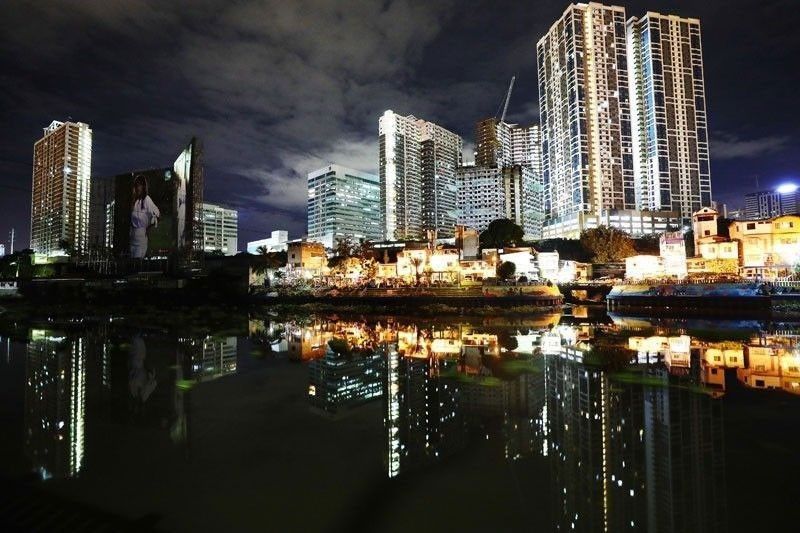Return to pre-pandemic growth seen earlier than expected

MANILA, Philippines — The Philippine economy may return to pre-crisis levels earlier than expected as key economic sectors enjoy significant improvements following the continued easing of mobility restrictions.
During the Philippine Economic briefing with foreign chambers of commerce on Friday, Socioeconomic Planning Secretary Karl Chua said prospects for the year remain encouraging, bolstering hopes of a return to pre-pandemic levels by early 2022.
A few months ago, Chua said a return to pre-COVID levels may likely happen by end-2022 or early 2023.
In the past few weeks, key sectors are seeing significant progress and are beginning to recover toward their pre-pandemic levels, Chua said.
“With further easing of restrictions and opening, we are likely to recover to our pre-pandemic nominal GDP (gross domestic product) level by early 2022,” he said.
Specifically, Chua said airlines, mall traffic and consumption are seeing progress.
After slumping to five percent of pre-COVID capacity in 2020, capacity has increased to 16 percent in September this year and 40 percent this month.
This is in line with the relaxation of the quarantine measures to Alert Level 2 in many parts of the country.
Visits to malls also improved from the lows of 24 percent of capacity in 2020 to 35 percent in October and further jumped to 63 percent in November.
Major malls are reporting a significant increase to 50 percent during weekdays and a high of 81 percent during weekends.
Chua said this is largely driven by families and children that are already allowed to go out under the current alert level.
Further, consumption in major fast food stores also spiked to 78 percent this month from the 35 percent in 2020 as more people work and children are allowed to go out with their families.
Chua maintained that returning to pre-pandemic levels will prevent long term scarring effects and productivity losses.
This year, GDP is seen growing four to five percent. Year-to-date GDP now stands at 4.9 percent.
“The trend shows that it is easy to reach or even exceed the five percent and with further relaxation, we are likely to reach our seven to nine percent next year,” Chua said.
He said attributed the recovery to the acceleration of the vaccination program, shift to Alert Level 1 by January, and the full use of the 2021 and 2022 budgets.
COVID cases have gone down from the peak of 26,000 to 1,000 daily and Chua attributed the decline to rapid vaccination, better risk management and the public’s cooperation.
“With everyone’s cooperation, we expect the holiday season to also go through without a major increase in COVID cases,” he said.
Meanwhile, ING Bank Manila senior economist Nicholas Mapa told reporters during the bank’s year-end economic briefing that the country’s GDP is likely to return to pre-pandemic growth level in the second half of next year.
“My expectation is Philippine GDP growth should be back to pre-pandemic levels somewhere between the third quarter and the fourth quarter of next year. So we have about a year to go before we get there,” Mapa said.
The Dutch financial giant sees the country’s GDP growth slowing down to 5.3 percent in the fourth quarter of this year.
Mapa said the country’s GDP is likely to average 5.1 percent this year
For 2022, ING sees the GDP expanding by 5.6 percent in the first quarter, four percent in the second, 5.7 percent in the third, and four percent in the fourth quarter.
ING sees the Bangko Sentral ng Pilipinas (BSP) turning hawkish by raising interest rates starting the second quarter of next year as the economic rebound continues to gain more traction.
The bank sees the Monetary Board hiking interest rates by 25 basis points in the second quarter and by another 25 basis points in the third quarter.
According to Mapa, average inflation may ease to 3.9 percent in the fourth quarter from 4.6 percent in the third quarter after returning to within the BSP’s two to four percent target as early as November.
For her part, Citi chief economist for Asia Johanna Chua said it is not enough to just go back to pre-pandemic levels of output. “It is really whether we can go back to pre-COVID levels of trend growth. And in some cases, can we hopefully catch up some of the loss output in the previous crisis and boost that growth more,” Chua said. — Lawrence Agcaoili
- Latest
- Trending



























